First, a little about what’s been happening around the yard…
I’m generally spending 2-4 hours an afternoon monitoring and photographing birds in the yard, weather and a few other activities permitting. In addition we monitor the watercourse area from our kitchen at various times of the day in an effort to see any spring migrants. I’ve spent a lot of time out in the cold and look forward to warmer weather which will hopefully bring more migrants.
After an early arrival (3/3) of our first American goldfinch in the yard (which quickly disappeared), our next arrival (also a male) wasn’t until 4/7, but this second arrival has been with us every day since. On April 3 we had a visit from a male Yellow-rumped (Audubon’s) warbler. What I suspect may be the same bird also returned on at least April 6th, 8th and 9th, visits I photographed. On April 9 we had three visits from the species and at least one of the warblers was different from our previous visitor(s). We are continuing to see Varied thrushes in the neighborhood, with five being just outside our yard on April 8. I assume this is due to the record and continuing snows in the mountains. On April 9 I got a glimpse (but no photos) of an Orange-crowned warbler above the watercourse. The same day I managed a brief sighting (but no photos) of a Ruby-crowned kinglet, a species that has been noticeably absent from the yard this winter.
And now on to the photos. Digressing from birds briefly, Townsend chipmunks apparently revived from hibernation a couple of weeks ago. We’ve had a visitor for about two weeks now, but on April 8 our initial visitor was joined by two more! We quickly became fast friends!
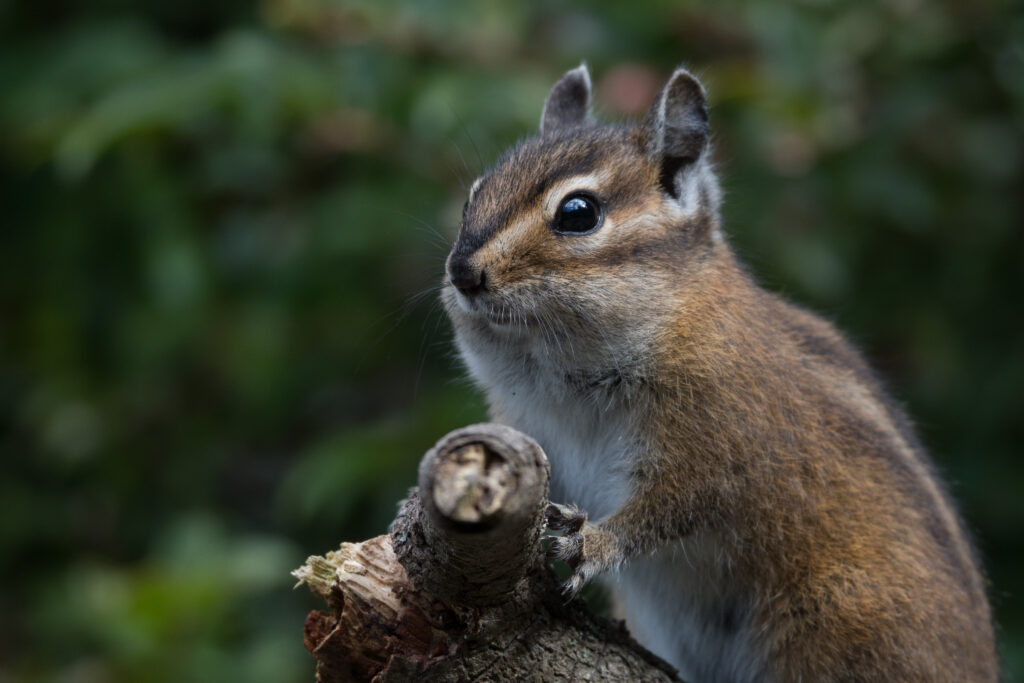
On the other hand, we have as many as four non-native Eastern Gray squirrels visiting the yard with suspected nests high in our fir trees.
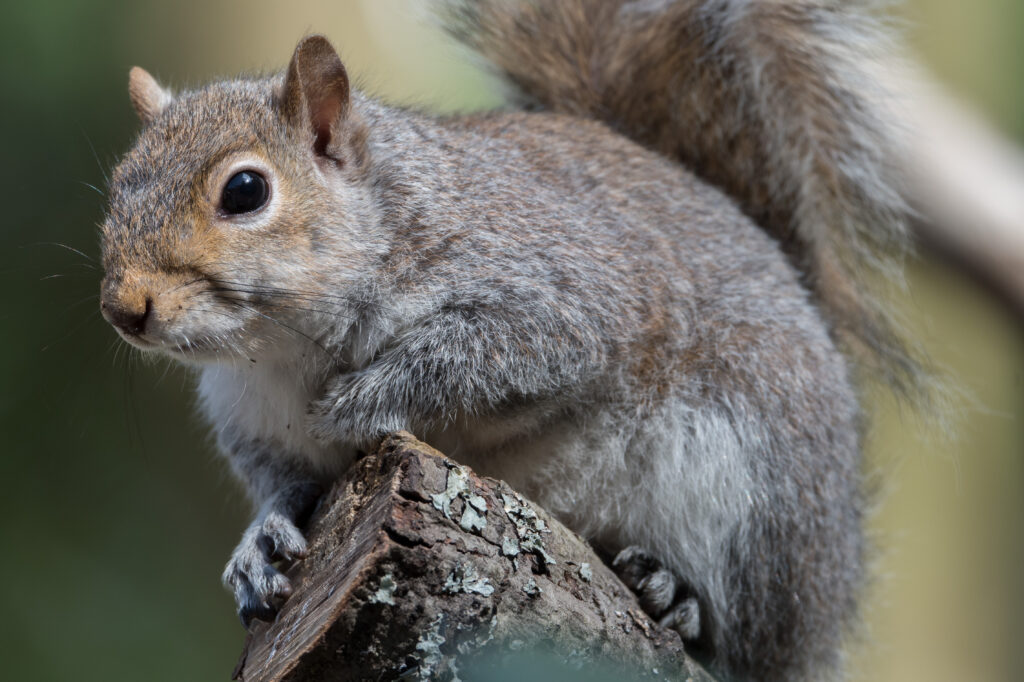
We have both Rufous and Anna’s hummingbirds, males and females, in the yard. The females of both species are more numerous than the males.
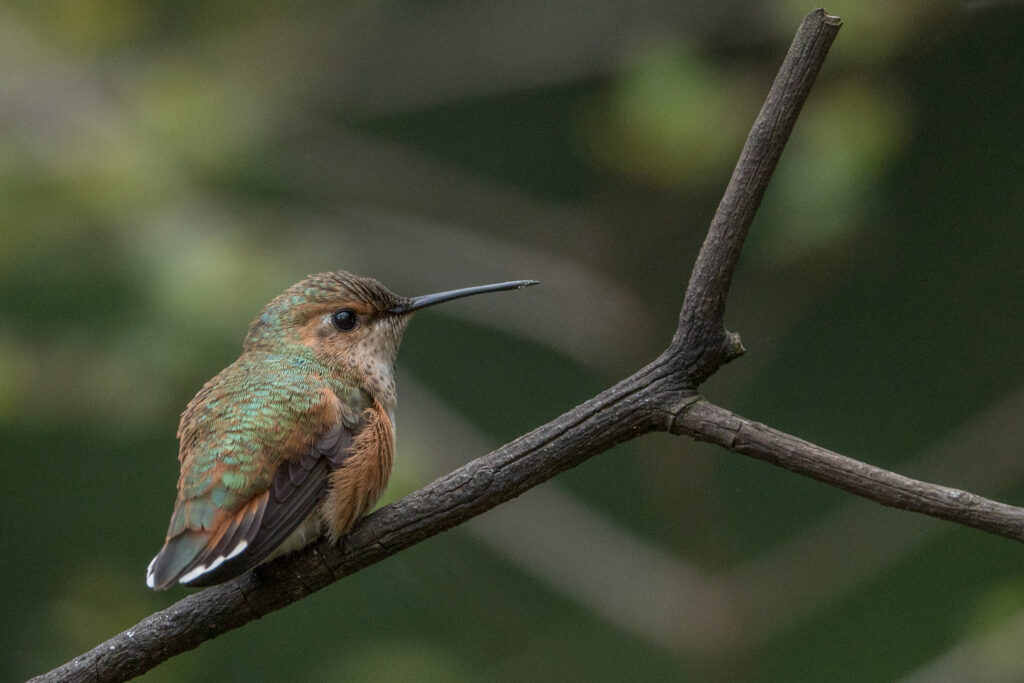
We have at least 4-5 Golden-crowned sparrows that have been with us all winter, most of which resemble this one…
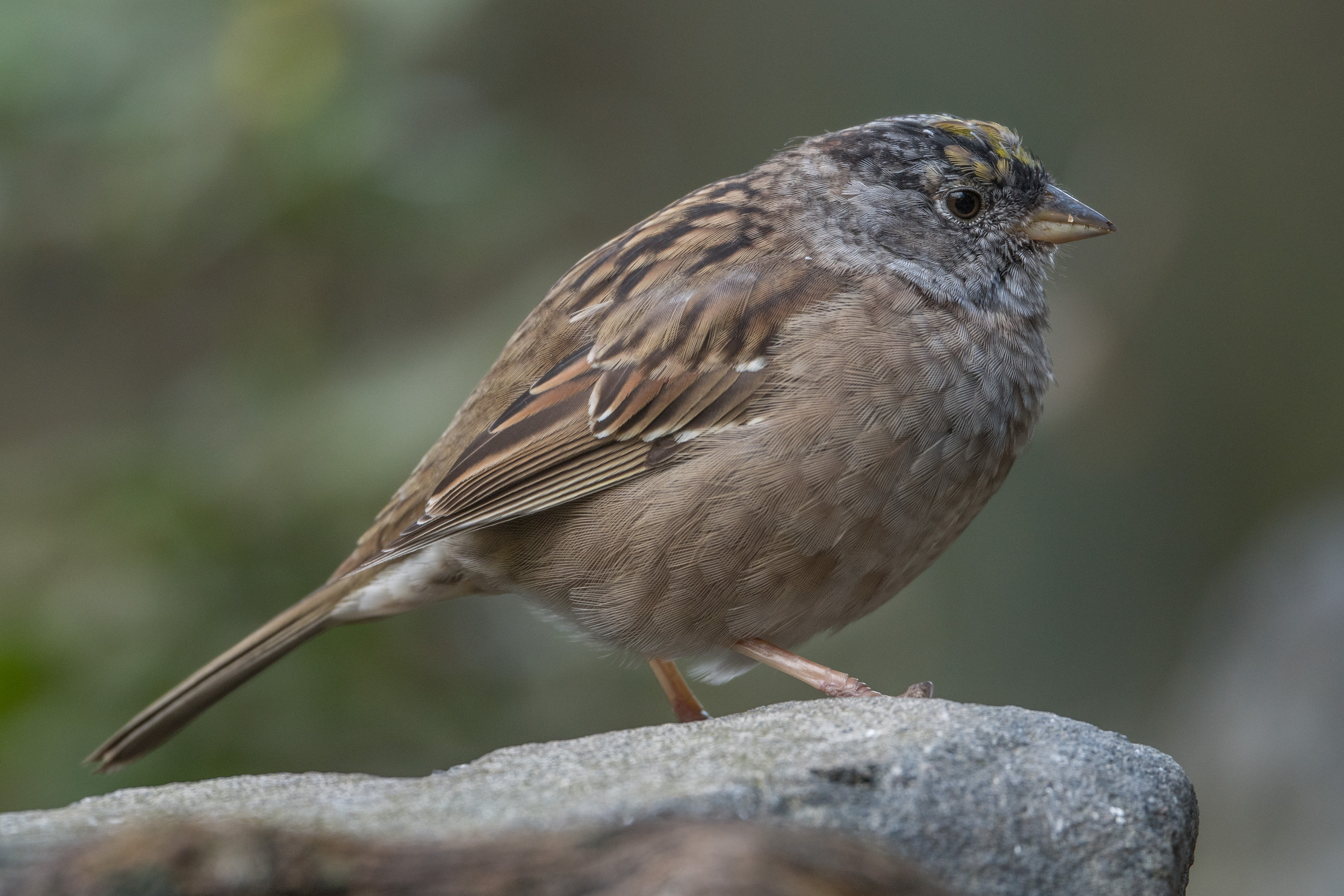
It’s a period for transition for this species and all will soon be migrating to their breeding grounds north and east of here. Just before they leave most will transform into their breeding plumage as this bird has done…
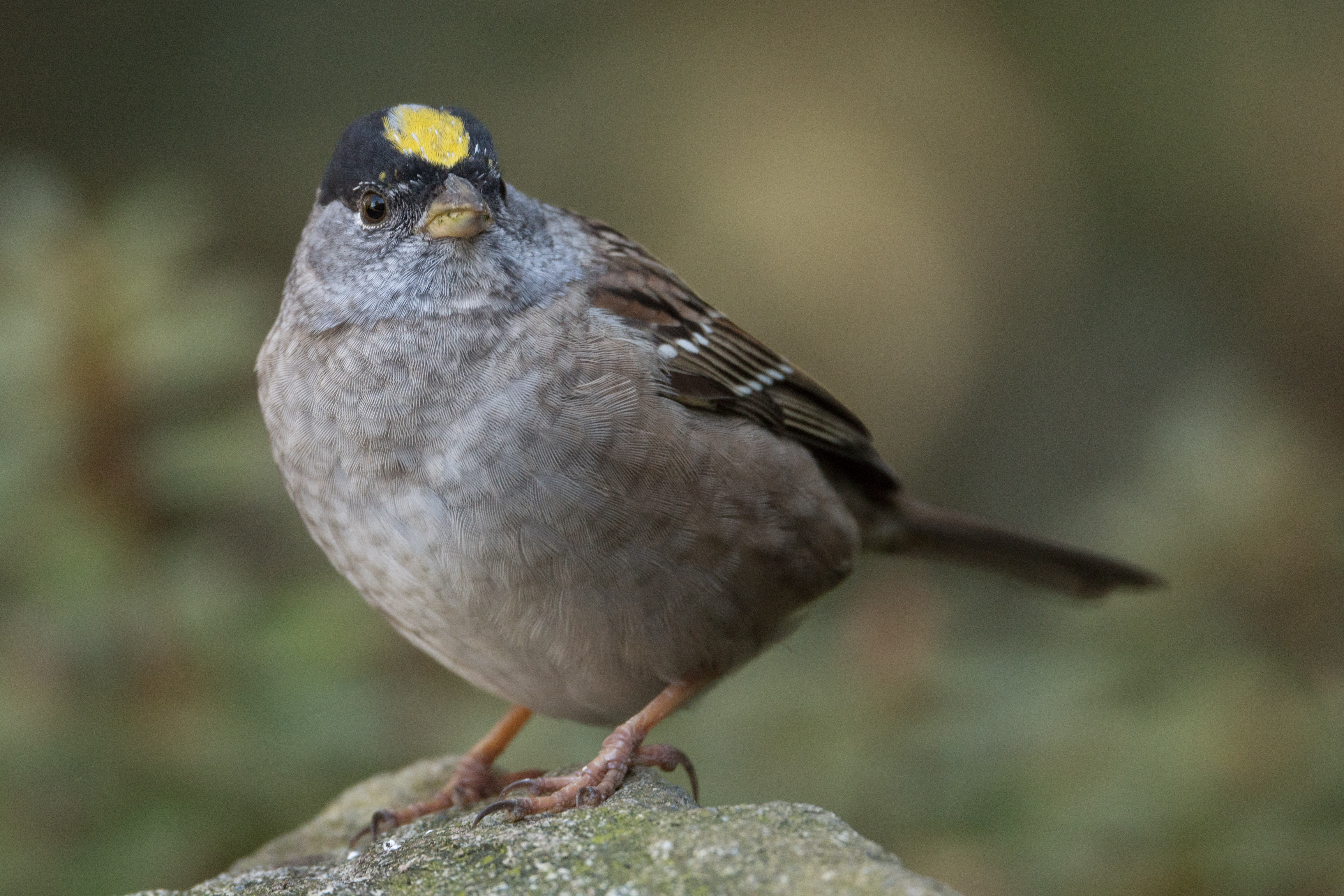
Here’s a photo of one of our two male Downy woodpeckers. It’s blind in its right eye and has miraculously survived in the area for well over a year.
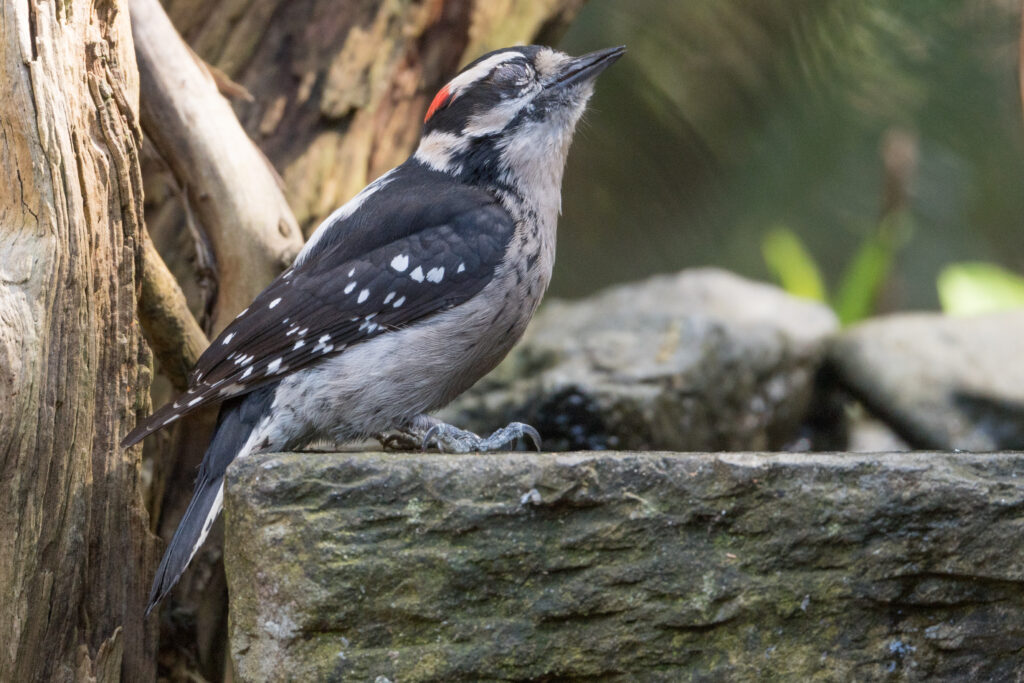
We just recently had a female show up so we’re hoping for some breeding action this spring.
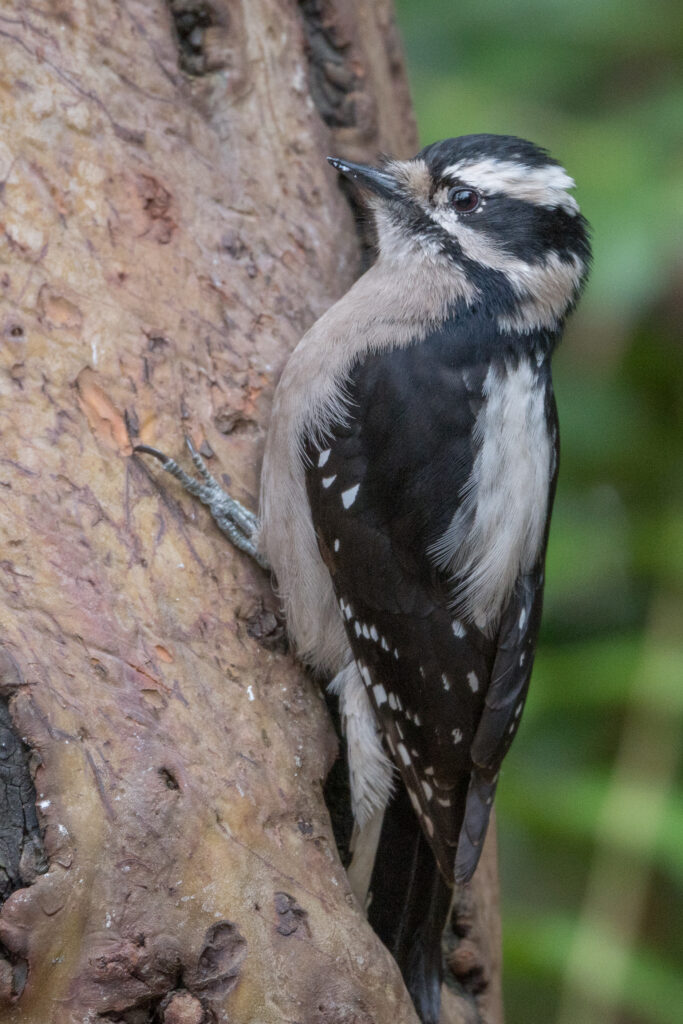
We have two Song sparrows in the yard, one of which is pictured below. In addition we have a Fox sparrow, at least one pair of Spotted towhees, Dark-eyed juncos (Oregon race), the aforementioned Golden-crowned sparrows, a White-crowned sparrow and the dreaded House sparrows.
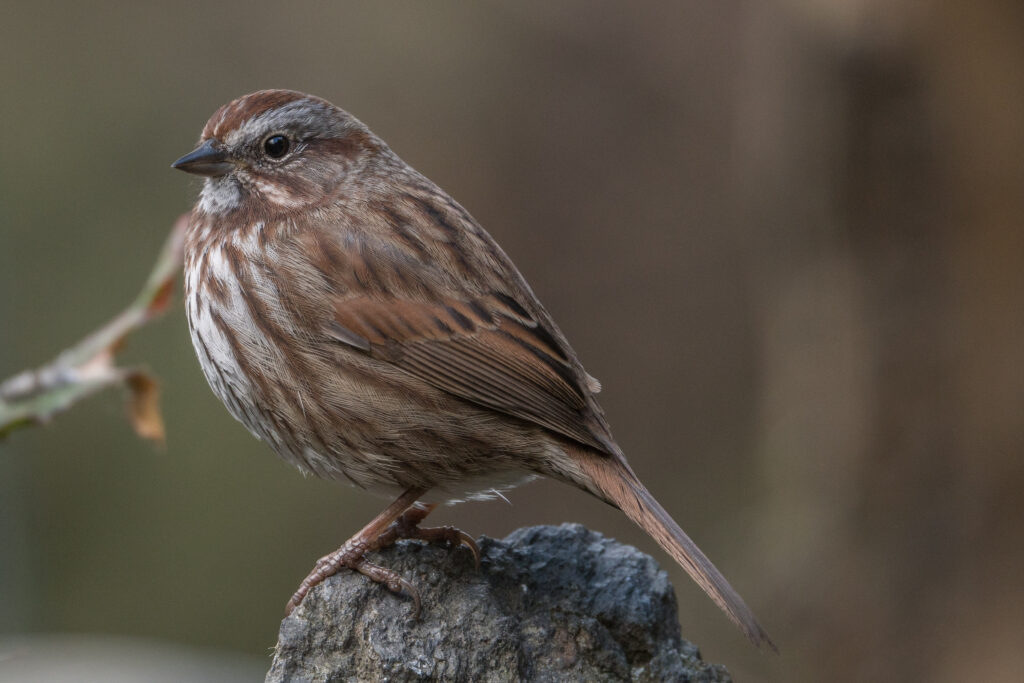
I marvel at the plumage detail I am able to obtain in my photos. It’s a detail far beyond what you would usually be able to obtain from observations with binoculars ‘in the field’, in part because a photo not only captures the detail but also freezes and preserves it. The difference in plumage texture (disregarding color) differs so much from species to species!
